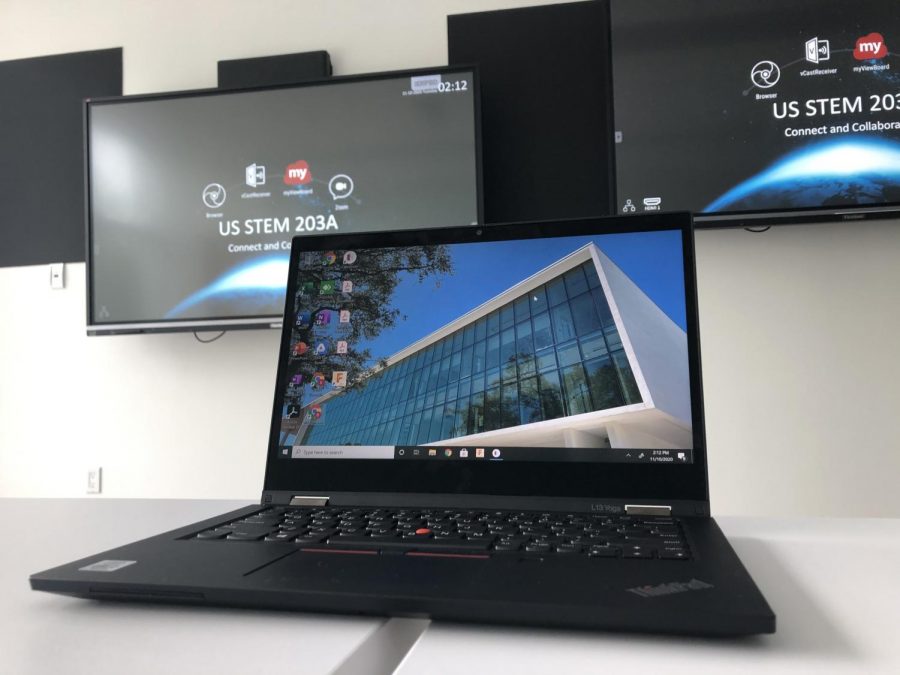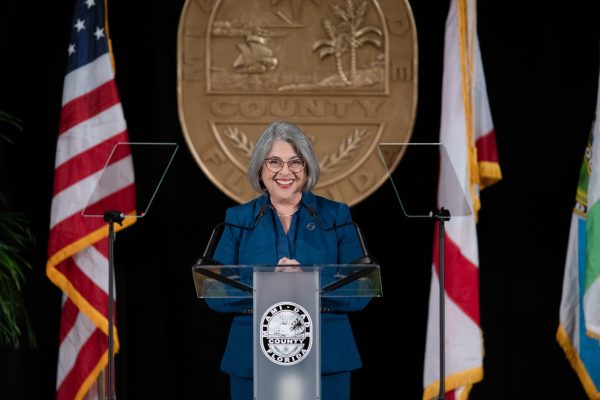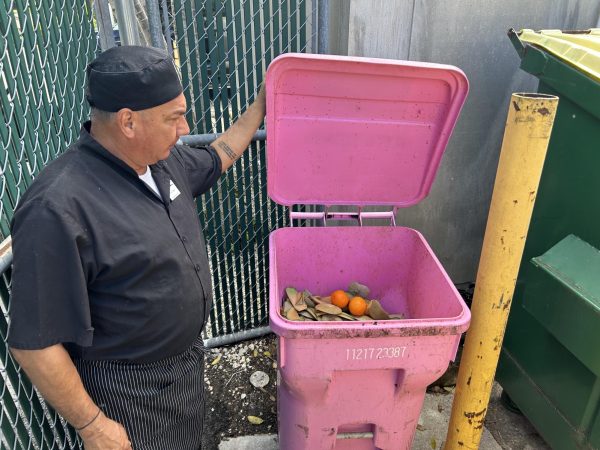For RE’s Tech Team, a year of sudden changes and constant challenges
With the COVID-19 pandemic’s impacts continuing to ripple through the 2020-2021 school year, the Ransom Everglades community has turned towards the expertise of the Tech Team more than ever before. The two months of REmote School, followed by the transition to hybrid learning, saw a markedly increased reliance on technology at RE. The Tech Team has now taken center stage as the leading protagonist in resolving RE’s technological issues—but the play is far from over yet.
It all began with the laptops. This year, to combat the spread of COVID-19 via shared machines and ensure a more uniform educational experience, RE made the decision to transition to a one-to-one laptop program. Due to supply chain issues, however, the Tech Team did not receive the laptops until one week before they had to deliver them to the student body. “It was a miracle that we got them ready in time,” RE’s new Chief Technology Officer, Mrs. Linda Lawrence, said.
There was another problem, however: none of the laptops were set to the right time zone, which the Tech Team did not realize until after the laptops had been distributed. It wasn’t an easy fix, either, due to an asynchronous transmission system within the student laptops that the Tech Team had opted to use instead of a less cost-effective, synchronous one.
They were in a Catch-22: because the laptops were set to the wrong time zone, they could not connect to the network—but because they could not connect to the network, they could not synchronize. Mrs. Lawrence explained some of the potential concerns and consequences: students not submitting their assignments at the right time, or simply not knowing whether their clock was telling them the right time to get to class.
They eventually resolved the issue. But more challenges were right around the corner. Mrs. Lawrence stressed some of the difficult questions that the Tech Team faced: “How do we organize the software so that it facilitates your daily learning?” and “What software products should we depend on?”
“Collaborating with teachers in order to make sure that the laptop that we delivered was optimal for your daily use was of utmost importance to us,” Mrs. Lawrence said.
That faculty collaboration was not a one-time occurrence. Mrs. Lawrence revealed the Tech Team’s reliance on the newly created RE Technology Task Force: a group of roughly thirteen members, consisting of both faculty and administrators.
The Technology Task Force played a significant role in determining the technological set-up for RE classrooms ahead of the school year. The team led a four-week program for faculty over the summer and covered a different theme each week, with topics ranging from communication to assessments to creativity.
For each theme, the Technology Task Force worked on delivering lessons and workshops about different software tools that teachers could use, including features within MyCompass, Google Classroom, Microsoft OneNote, and Microsoft Teams.
Even still, despite months of preparation from the Tech Team and the Technology Task Force alike to ensure a smooth experience for students and teachers, the reopening of campus on October 12 brought an entirely new set of technological issues with it.
Lucas Gomez ‘21, who decided to stay remote past the October 12th reopening, noted that audio issues remain one of his most prominent challenges as a student who is not on campus. “The biggest technical difficulty that I’ve faced has been the audio difference,” Gomez said. “Sometimes the people who are in in-person learning get cut off, or the audio isn’t as loud as it should be, so if you’re remote it is very hard to listen in.”
Gomez also noted that certain types of classes tend to present more significant difficulties. “It gets extremely challenging when it’s a Harkness-discussion class and there’s a lot of conversation moving around because it is really tough to try to join in and engage in those discussions from a remote location,” Gomez said.
Mrs. Lawrence admitted they are still working on developing a concrete solution for the situation Gomez described. “I think we have the video down as long as the student has good Wi-Fi,” Mrs. Lawrence said. “But we are still trouble-shooting and trying to find that special sauce for making the sound quality better and reducing the lag and delivery for teachers and students.”
Mrs. Lawrence offered a couple of potential solutions to the problem, including the incorporation of Google Meet breakout rooms. “I think that’s going to be a very positive addition to the classroom environment to make students that are remote feel as if they are working with their classmates directly,” Mrs. Lawrence said. “We are also coming up with ways to do hands-on camera delivery for labs. So, we are experimenting.”
Such experiments have been put to the test throughout the first four weeks of on-campus learning, but the most immediate issue that continues to affect the RE community is the need for improved internet connection in the STEM building.
“Unfortunately, the Wi-Fi in the STEM building is not always very reliable,” said Gabriel Pulido ‘21. “In fact, its instability caused a delay on one of my MyCompass math tests by 30 minutes,” Pulido added.
Chloe Wiesenfeld ‘21 has also experienced issues with the STEM building’s Wi-Fi. “Last week, I was unable to load my online math homework and was unable to get work done during my free time at school,” Wiesenfeld said.
Other tasks on the Tech Team’s to-do list include adding more internet bandwidth outdoors, and making sure students have power on campus, which might involve the addition of solar-panel charging stations in places such as the quad.
Apart from the clear technical problems which must be addressed, Mrs. Lawrence confessed that another challenge the Tech Team faces is the fact that they are blinded from knowing all the pressing issues that students have.
“We don’t get enough [emails requesting for technical assistance] from the students,” Mrs. Lawrence said. “[Students] are not advocating for themselves. We hear from teachers and parents, more so than students, which is of concern since you guys are grades six through twelve.”
In an effort to encourage students to engage more with the Tech Team, Mrs. Lawrence suggested the creation of a student task force, just like the faculty and administrator task force. She hopes that having a more personal connection between students and tech members will allow for deeper insight into the problems that students need solutions for and improve the overall educational experience for all.
While there certainly is more work to be done, Mrs. Lawrence said that RE’s Tech Team has faced every challenge, from the smallest issue to the most important one, with a growing sense of resilience and flexibility.
“[We have learned] to approach a situation knowing that people are willing to give you some symptoms which provide answers to what the problems are,” Mrs. Lawrence said. “Having that ear for what might be a solution is one of the biggest things that I can rely on for problem-solving.”






